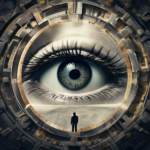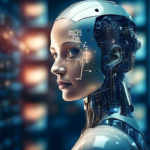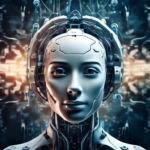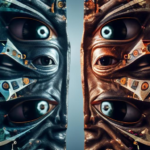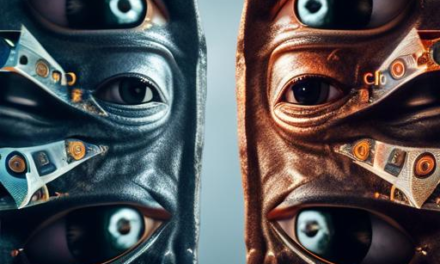In a world where visuals speak louder than words, the quest for that perfect stock photo can sometimes feel like a treasure hunt in a vast digital jungle. But imagine if you could harness the power of cutting-edge artificial intelligence to conjure these images, tailor-made to your exact needs. Gone are the days of settling for generic, overused photos. Welcome to the frontier of creativity, where AI not only complements your vision but enhances it, bringing to life unique, captivating stock photos with just a few clicks. In this guide, we’ll embark on a journey through this exciting new landscape, arming you with the knowledge and tools to transform your visual content strategy. Let’s unlock the magic of AI together, and set your creative potential free.
Table of Contents
- Embrace the Power of Artificial Intelligence in Photography
- Selecting the Right AI Tools for Crafting Stock Images
- Mastering AI Algorithms: A Beginner’s Guide
- Utilizing Prompts and Inputs to Generate Authentic Images
- Fine-tuning AI Outputs: Achieving Realistic Results
- Ensuring Diversity and Inclusion in Your AI Stock Photos
- Protecting Intellectual Property with AI-Generated Content
- Optimizing Image Quality for Various Platforms
- Future Trends: AIs Role in Shaping Stock Photography
- Future Outlook
Embrace the Power of Artificial Intelligence in Photography
Artificial Intelligence (AI) is transforming the world of photography, pushing the boundaries of what’s creatively possible. If you’re looking to craft unique stock photos that stand out, AI tools can be your ultimate ally. Here are a few strategies to leverage AI for your stock photography endeavors:
First, consider using **AI design tools** for generating fresh ideas. Platforms like **DeepArt** and **RunwayML** enable you to create striking visual effects and manipulate images effortlessly. Here’s what you can achieve:
- Transform ordinary photos into captivating artwork.
- Utilize ML models to add surreal, artistic filters.
- Combine various styles to produce composite visuals.
Another groundbreaking option is to use **Generative Adversarial Networks (GANs)** to craft images from scratch. Tools like **Artbreeder** help you blend different photos to produce entirely new images. Experiment with different attributes such as:
- Facial features and expressions for portrait images.
- Environmental elements for landscape photography.
- Textures and patterns for abstract backgrounds.
For a more tailored experience, AI-driven photo editing software like **Photoshop’s Neural Filters** can offer miraculous adjustments. With just a few clicks, you can:
- Alter lighting and colors to match any mood.
- Remove unwanted elements effortlessly.
- Enhance photo quality by upscaling and reducing noise.
| AI Tool | Primary Use | Main Benefit |
|---|---|---|
| DeepArt | Artistic Filters | Create unique art pieces |
| RunwayML | Visual Manipulation | Effortless image adjustments |
| Artbreeder | Image Blending | Generate new images |
| Photoshop Neural Filters | Photo Editing | Refined enhancements |
don’t overlook the power of **AI-based recommendation systems** to stay updated with the latest trends and styles in stock photography. Tools like **Shutterstock’s Shotz** provide insights into popular themes and elements, ensuring that your stock photos remain relevant and in-demand.
Harnessing AI in your photography workflow can not only save you valuable time but also amplify your creative output, making your stock photo collection truly distinct and captivating.
Selecting the Right AI Tools for Crafting Stock Images
To make the most out of AI for stock image creation, it’s crucial to know which tools best fit your needs. Several AI-powered tools have emerged, each with unique capabilities. Let’s explore some of these.
1. AI Art Generators: These tools utilize deep learning models to generate highly creative and unique art pieces. Notable options include:
- DALL-E: Known for producing unbelievably realistic images from textual descriptions.
- DeepArt: Transforms photos into artworks based on famous art styles with ease.
- Artbreeder: Perfect for blending different images and modifying them using multiple attributes.
2. AI Photo Enhancers: Sometimes, it’s about enhancing existing images. These tools can be a game-changer:
- Let’s Enhance: Upscale images while preserving quality, making them print-ready.
- Remini AI: Focuses on improving and restoring old or blurry photos to crystal clarity.
- Skylum Luminar AI: Provides one-click enhancements and powerful retouching tools.
3. AI for Stock Management: Tools that help manage and categorize your stock photo library efficiently:
- Scopio: Utilizes AI to curate, tag, and classify images seamlessly.
- Imgix: Optimizes images for web use and delivers them swiftly.
| Tool | Feature | Best For |
|---|---|---|
| DALL-E | Realistic image generation from text | Novel image creation |
| DeepArt | Artistic transformations | Art styles |
| Let’s Enhance | Image upscaling | Print-quality images |
| Remini AI | Photo restoration | Old images |
Mastering AI Algorithms: A Beginner’s Guide
Creating unique stock photos using AI is both an exciting and transformative endeavor. With the advancements in machine learning and AI algorithms, the days of relying solely on traditional photography techniques are evolving rapidly. Here’s how you can dive into this innovative process and start generating your distinctive stock images.
Understanding the Basics
Begin with familiarizing yourself with AI tools designed specifically for generating images. Platforms such as DeepArt, RunwayML, and DALL-E enable users to create diverse and high-quality visuals. These tools leverage neural networks to transform inputs into striking images that often surpass conventional photography in their uniqueness and creativity.
- DeepArt: Perfect for converting your photos into artwork inspired by famous artists.
- RunwayML: Great for experimenting with various AI models and customizing your images.
- DALL-E: Excels at generating images from textual descriptions.
Getting Started with Text-to-Image AI
One of the most compelling methods is using AI to create images from text descriptions. Write clear and imaginative descriptions to guide the AI. For example, you might type:
| Description | Potential Output |
|---|---|
| “A serene sunset over a mountain range with a river flowing through the valley.” | A stunning landscape image with vibrant colors and detailed natural elements. |
| “A futuristic city skyline with flying cars and sleek skyscrapers.” | A high-tech urban scene that depicts advanced technology and modern architecture. |
Refining and Customizing Your Creations
AI-generated images can be tweaked and enhanced for better results. Utilize photo editing software like Adobe Photoshop or GIMP to refine details, adjust colors, or add filters. Additionally, incorporating elements from different AI-generated images can produce a composite that holds a strong aesthetic appeal. Here are some tips:
- Layering: Combine multiple AI images to enhance depth and complexity.
- Filters: Use various filters to give your images a unique look.
- Adjustments: Fine-tune brightness, contrast, and saturation to perfect your images.
Utilizing Prompts and Inputs to Generate Authentic Images
To generate authentic images with AI, the key lies in crafting the right prompts and inputs. These crucial elements act as your guiding star, directing the AI in creating visuals that are both unique and highly relevant to your needs.
Step-by-Stepping Your Way to Success:
- Define Your Vision: Begin by clearly defining what you want. Do you need a serene beach backdrop, an urban skyline, or a whimsical forest scene? The more specific your vision, the better AI can tailor the image.
- Use Descriptive Language: Be detailed in your prompts. Use adjectives that captivate the essence of what you envision. Instead of saying “a forest”, try “a lush, mystical forest bathed in golden morning light”.
- Specify Composition: Consider the composition of your image. Do you want a close-up, a wide shot, or a specific element to be the focal point? Specifying these details can drastically improve the relevance of the outcome.
Diversify Your Inputs: Blending various elements can often lead to the most unique results. For instance:
| Element | Descriptor | Combination Idea |
|---|---|---|
| Nature | Golden Hour | Sunset at a quiet lake |
| Urban | Modern Architecture | Skyscrapers reflecting dawn light |
| Fantasy | Enchanted | Ancient castle in a mystical forest |
Iterate and Improve: AI-generated images may not always hit the mark on the first try. Don’t hesitate to tweak your prompts and rerun them. Sometimes, minor adjustments lead to significant improvements. By continuously refining your inputs, you can achieve strikingly original images tailored to your exact specifications.
Fine-tuning AI Outputs: Achieving Realistic Results
To achieve realistic results when fine-tuning AI-generated stock photos, several important techniques can be employed. These methods help ensure that the end results not only look professional but also feel authentic and relatable to a larger audience.
- Customizable Filters: Implementing and adjusting various filters can drastically change the look and feel of the stock photos. Color adjustments, contrast, sharpness, and focus are pivotal elements.
- Reinforcement Learning: Using models that learn from feedback can refine the output quality. Feedback loops where the AI continuously improves based on user preferences ensure more precise and realistic images.
- Style Transfer: Borrowing styles from high-quality photos can enrich the visual appeal. This technique helps in providing texture, color distribution, and artistic touch that align closely with real-life photography.
For more detailed customization, **metadata can be incorporated** into the generation process to control various aspects like location, season, and context. This not only increases relevance but also aligns the generated content with specific criteria set by users. Here’s a quick look at how metadata attributes can influence image quality:
| Metadata Attribute | Impact on Image |
|---|---|
| Location | Dictates background and setting; urban vs. rural scenes |
| Season | Alters environment; winter snow vs. summer sun |
| Time of Day | Adjusts lighting conditions; dawn, noon, dusk |
| Subject Type | Defines focus; people, products, nature |
Another effective tactic is **training the AI with diverse datasets**. By exposing the model to a wide range of styles, subjects, and environmental conditions, it can learn to produce more versatile and lifelike images. Incorporating images with varied lighting, angles, and contexts ensures that the final outputs aren’t just realistic but also unique.
Don’t overlook the power of **post-processing**. Even after generating an initial image, small tweaks and edits can push the quality from realistic to stunning. Tools like Adobe Photoshop or Lightroom can be used to add those final touches; balancing light, adding grain, or enhancing colors can make your AI-created stock photo look absolutely authentic.
Ensuring Diversity and Inclusion in Your AI Stock Photos
To foster a truly inclusive representation in your AI-generated stock photos, it’s essential to make deliberate choices. Start by **curating a diverse dataset** that encompasses various ethnicities, age groups, body types, abilities, and gender identities. This ensures that the images create accurate and respectful depictions of different communities.
- Ethnicities: Represent a wide range of racial and cultural backgrounds.
- Age Groups: Include children, teenagers, adults, and seniors.
- Body Types: Showcase various body shapes and sizes.
- Abilities: Feature people with different physical and mental abilities.
- Gender Identities: Include non-binary and transgender individuals.
Tools like **Generative Adversarial Networks (GANs)** are excellent for creating varied and unique photos. By training these algorithms on inclusive datasets, you can generate realistic images that truly reflect our diverse world. Moreover, employing techniques such as **style transfer** can further enhance the visual diversity by applying various artistic styles, thus adding another layer of uniqueness.
For a visual representation of inclusivity, consider the following example of a dataset breakdown:
| Category | Percentage |
|---|---|
| Ethnic Diversity | 40% |
| Age Representation | 20% |
| Body Types | 15% |
| Abilities | 15% |
| Gender Identities | 10% |
Remember, diversity and inclusion are not just trends but integral parts of creating authentic and appealing content. By consciously implementing these aspects into your AI stock photos, you not only serve a broader audience but also contribute to a more equitable visual landscape. Making inclusion a priority in your imagery empowers underrepresented groups and showcases the world in its beautiful diversity.
Protecting Intellectual Property with AI-Generated Content
In the realm of digital marketing and creative industries, protecting intellectual property can often feel like navigating a minefield of copyright laws and potential infringements. Fortunately, AI-generated content offers a solution, especially when creating unique stock photos. By utilizing advanced algorithms and machine learning, AI can generate entirely new images that are not only visually stunning but also free from copyright issues.
One of the primary advantages is that **AI-generated images** are created from scratch, ensuring that they do not replicate existing works. This uniqueness is vital for brands that aim to maintain their distinct identity. Additionally, the risk of encountering legal issues over image ownership is significantly reduced, providing peace of mind for content creators and business owners alike.
Here are some benefits of using AI for generating stock photos:
- Customization: AI tools allow for a high degree of customization, enabling users to tailor images to specific brand guidelines and preferences.
- Scalability: Need hundreds of unique images? AI can produce them in a fraction of the time it would take a human photographer, making it ideal for large-scale projects.
- Consistency: Maintain a cohesive visual style across all marketing materials by using AI-generated images that align with your brand’s aesthetics.
Moreover, many platforms offer user-friendly interfaces where you can input parameters like color scheme, subjects, and styles. These inputs guide the AI in producing images that meet your specific needs, ensuring you receive content that’s not just unique but also relevant to your brand’s message.
Here’s a comparison of traditional stock photos and AI-generated images:
| Feature | Traditional Stock Photos | AI-Generated Images |
|---|---|---|
| Originality | Limited, often reused | Entirely unique |
| Cost | Often high, per image | Cost-effective, per batch |
| Customization | Limited to existing photos | Highly customizable |
| Legal Risks | Potential copyright issues | Minimal to none |
Integrating AI-generated stock photos into your workflow not only streamlines the content creation process but also safeguards your intellectual property. This innovative approach ensures that you can confidently use images that are tailored to your vision, free from legal concerns, and consistently high quality.
Optimizing Image Quality for Various Platforms
When leveraging AI to create unique stock photos, ensuring that your images maintain high quality across different platforms is essential. Different platforms have varying requirements and display peculiarities, so a one-size-fits-all approach rarely works. Here are some creative tips to help you optimize image quality effectively:
- Use Platform-Specific Resolutions: Each platform, from social media to websites, has its own resolution specifications. For instance:
- Instagram: 1080×1080 pixels (square format)
- Facebook: 1200×630 pixels (link posts)
- Twitter: 1024×512 pixels
- Dynamic Cropping: AI tools often provide smart cropping features that analyze the image content, ensuring the most important elements remain in view regardless of aspect ratio changes. This feature is fantastic for platforms like Pinterest, where portrait orientation is preferred.
Consider enhancing the visual appeal by incorporating **AI-based filters** that adapt based on platform requirements. Filters can adjust brightness, contrast, and saturation to match the look and feel of the specific platform. Platforms like Instagram thrive on visually appealing images that pop, whereas LinkedIn may benefit from a more professional and subdued tone.
In cases where text overlays are necessary (e.g., for promotional banners or quotes), ensure that the AI incorporates **text readability enhancements**. This might include automated contrast adjustments between text and background or dynamic font size scaling. Being mindful of these small tweaks can significantly enhance user engagement.
| Platform | Recommended Resolution | Best Practices |
|---|---|---|
| 1080×1080 | Use vibrant colors; avoid clutter | |
| 1200×630 | Keep text minimal; highlight central focal points | |
| 1000×1500 | Use portrait orientation; leverage whitespace |
Last but not least, periodic testing and feedback integration are key. Analyze performance analytics to identify which types of images perform best on different platforms. Use this data to continually refine the AI-generated images and keep up with platform-specific trends.
Future Trends: AIs Role in Shaping Stock Photography
Artificial Intelligence (AI) is revolutionizing stock photography in unprecedented ways, unlocking a myriad of opportunities for creators and users alike. AI-powered tools are enabling the generation of high-quality, unique images, helping photographers and designers to meet the ever-growing demand for fresh content.
One of the emerging trends is the use of AI-driven image generators. These tools can produce an array of stock photos that are not just high in quality but also highly customizable. Through deep learning algorithms, AIs can understand and replicate various styles, compositions, and even moods in their generated images. This means that instead of sifting through countless stock photos, users can now specify exactly what they need, and the AI will generate it on demand.
Key benefits of using AI in stock photography include:
- Personalization: Tailor images to your specific needs.
- Efficiency: Save time with instant image generation.
- Diversity: Access a wider range of unique visuals.
Apart from image generation, AI also aids in image enhancement and editing. AI tools can quickly retouch images, adjust lighting, and apply filters that can elevate standard photos to professional-quality shots. This technology not only enhances the quality but also reduces the workload for photographers, allowing them to focus more on creativity.
Here’s a look at some leading AI tools in the stock photography space:
| Tool | Function | Feature |
|---|---|---|
| DALL-E | Image Generation | Custom Imagery |
| Remove.bg | Background Removal | Automatic Processing |
| Pixlr | Photo Editing | AI Enhancements |
As AI continues to evolve, we can expect even more sophisticated tools that not only create but also curate stock photo collections based on user preferences and market trends. This means that the future of stock photography will be more dynamic, diverse, and user-friendly, propelling creative industries into new heights.
Future Outlook
the possibilities of using AI to create unique stock photos are endless. By harnessing the power of artificial intelligence, photographers and designers can explore new creative avenues and push the boundaries of traditional imagery. So, go ahead and unleash your imagination with AI – the future of visual storytelling is in your hands! Let your creativity soar and watch as your creations captivate and inspire the world. Embrace the future and create magic with AI-powered stock photos today!


